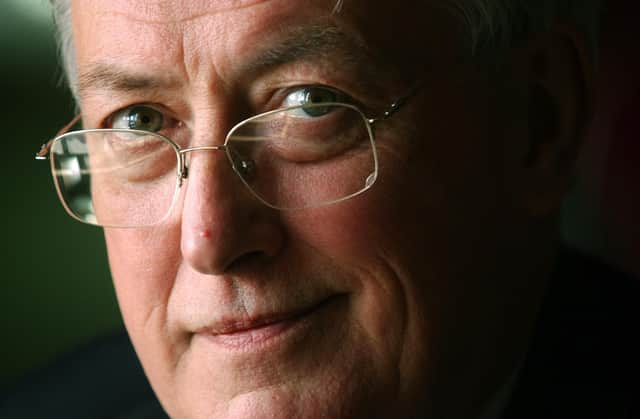Obituary: Michael Green, pathologist


Professor Michael Green, who has died at 82, was a Home Office consultant pathologist who became involved in some of the most notorious criminal cases of the late 20th century.
In the 1970s, while based at St James’s Hospital in Leeds and also holding down a job as senior lecturer at Leeds University, he was called in to examine a 37-year-old woman who had survived an attack in an alleyway in Keighley by someone armed with a hammer. It was to be the start of the Yorkshire Ripper inquiry, and throughout its five years, Professor Green was the man to whom the increasingly frustrated detectives turned.
Advertisement
Hide AdAdvertisement
Hide AdHe was already something of a medical veteran. Before turning to pathology he had wide general training, including a two-year spell with the Flying Doctor service in South Australia. He once survived a plane crash when the small aircraft taking him to a remote location in the outback hit a hole on landing and a wing broke off the fuselage.
Back in Britain, as deputy to Professor David Gee at Leeds University, he became involved in a raft of cases which attracted huge public attention. Among these was the death of a Leeds nurse, Helen Smith, in Jeddah, Saudi Arabia in May, 1979. It became a cause célèbre, with allegations by her father that she had been murdered, rather than having fallen 70 feet, during an illegal drinks party at the home of a British doctor.
In another case involving the disappearance in August 1974 of a 36-year-old mother of two whose body was never found, Professor Green helped secure a life sentence for her jealous lover, based on DNA evidence.
Throughout his career he maintained a special interest in child abuse deaths and lectured and published widely on the subject. He acted as an advisor to the Government in the second appeal of a solicitor who had been found guilty at a “cot death” trial of murdering her two small children. Following research conducted at Sheffield University, where he was later Emeritus Professor in forensic pathology, he published a paper arguing that greater caution should be applied to unexpected cot deaths in the first year of life.
Advertisement
Hide AdAdvertisement
Hide AdHe also took a close interest in the disappearance in 1974 of the Hull-based fishing trawler the Gaul in the Barents Sea, with the loss of the 36-man crew. As consultant pathologist to the official inquiry, he travelled to Murmansk and carried out a series of exhumations in sub-Arctic conditions from the sunken vessel.
Michael Alan Green was born in Batley in 1938, the only child of Thomas and Annie Green. His father was the manager of a local Ford garage and his mother worked in a wallpaper shop. Michael attended the local church primary school and later Batley Grammar, where he wrote for the school magazine. He excelled in English and literature but medicine was always his calling and he started at the Leeds Medical School in 1956.
He qualified in 1961 and obtained a job as a junior doctor in a local hospital, with the ambition of becoming a paediatrician. During a period as Registrar in paediatrics at the Leeds General Infirmary in 1962, he married Jennifer Mencher, an anaesthetist from a Jewish family, whom he met at medical school.
There was one obstacle to his progress. He had as his boss an anti-Semitic consultant who told him: “Because of your unfortunate marriage, Green, I will no longer be able to support your future career.” Michael resigned on the spot.
Advertisement
Hide AdAdvertisement
Hide AdHe then joined the department of forensic medicine at Leeds University. However, after a couple of years and amid a threat to shut down the unit, he took up the offer in Australia, where Jennifer had relatives. It wasn’t an easy life, with sick people living in remote areas needing medical care. Surgeries would be held by radio, powered by someone sitting on a fixed bicycle, generating electricity, with a community of several hundred people able to listen in, while Michael and Jennifer gave instructions. Each home had a large walled container organized into numbered squares, containing various medications, bandages and other devices so treatment could be administered remotely. There were just two small planes to cover an area bigger than England and Wales.
After two years Professor Green joined the forensic department in Sydney but by 1969 it was time to return to England and more medical education for both of them. Jennifer qualified as an ophthalmologist, Michael as a forensic pathologist, becoming a member of the Royal College of Pathology in 1981 and a Fellow in 1992.
He was a member of the British Medical Association central consultants’ and specialists’ committee and was a visiting lecturer at Leipzig, Tokushima, and Sydney, and an external examiner at other universities. After retirement he and Jennifer did a five-year stint as directors of Child Advocacy International in Uganda, a charity bring services to children orphaned by HIV.
His home interests included vintage motor cycles, model railways and a 1956 open-top Morris Minor which he took to Norway and Holland.
He and Jennifer had two daughters and four grandchildren.
Comment Guidelines
National World encourages reader discussion on our stories. User feedback, insights and back-and-forth exchanges add a rich layer of context to reporting. Please review our Community Guidelines before commenting.